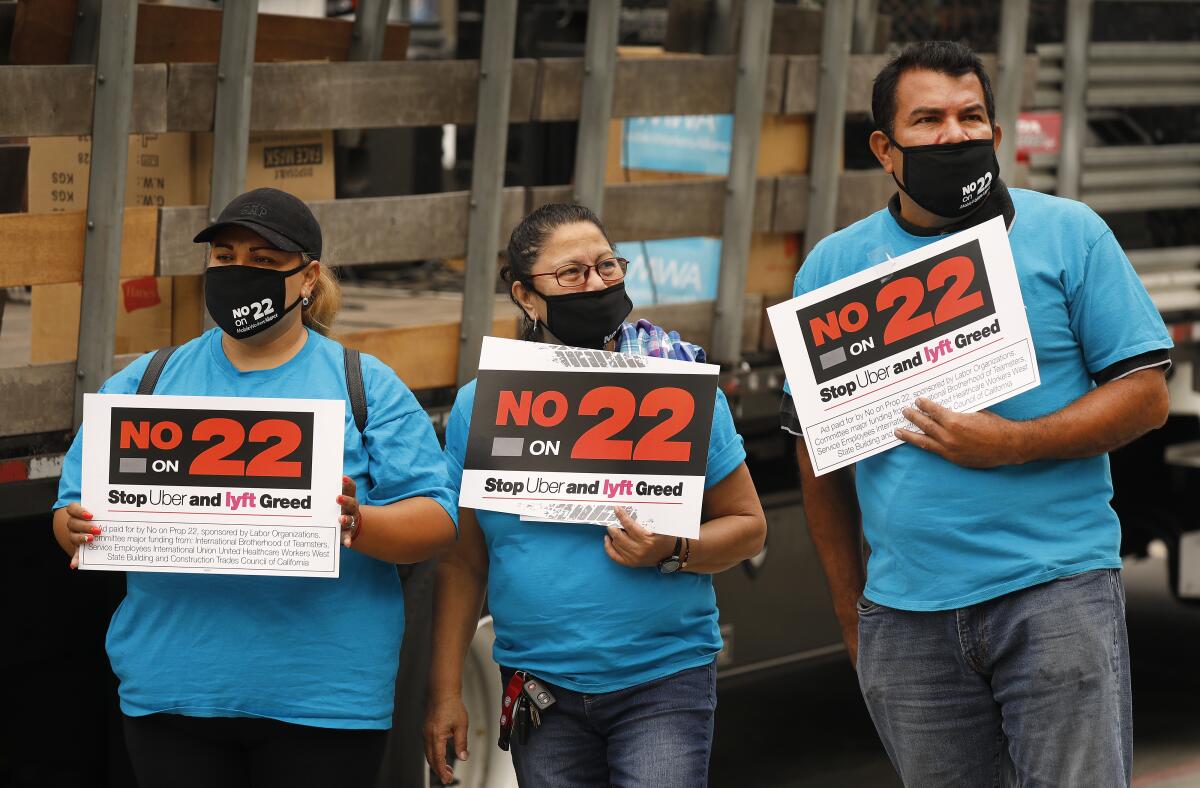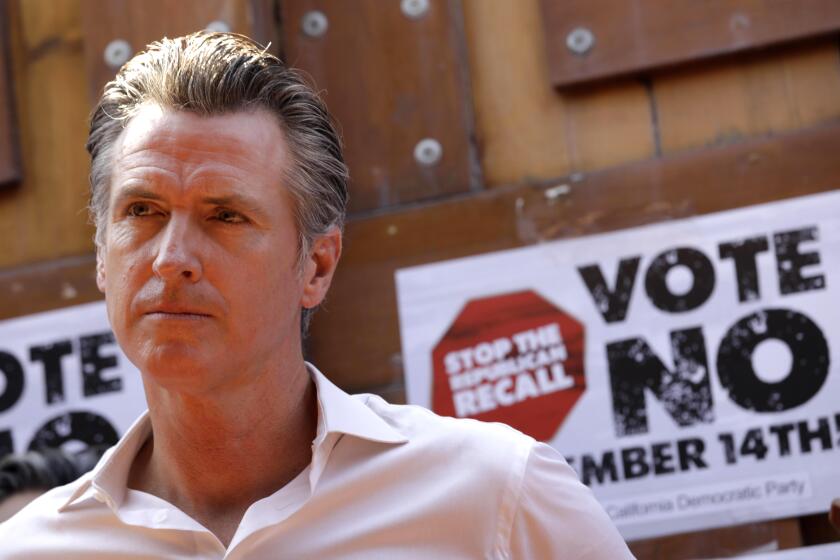Column: You think California’s recall system is dangerous? Check out the initiative process

- Share via
At the beginning of the 20th century, Gov. Hiram Johnson and his progressive allies established the referendum, initiative and recall in California. The goal was to reduce the power of the state Legislature and the moneyed interests that controlled it — especially the Southern Pacific railroad.
A century later, though, the system of direct democracy they put in place is not working all that well.
This year we’ve been watching a misbegotten recall make a fool of the state. It’s a magnet for loopy, unprepared and extremist candidates, and it may yet undermine the will of most Californian voters by propelling a person with little popular support into the state’s highest office — at a cost of about $400 million to taxpayers.
But the recall isn’t direct democracy’s biggest problem. Over the years, the recall power hasn’t been overused. It has only been successful six times in 110 years at unseating elected state officials, and only once in all that time, in 2003, has a governor been removed.
The real problem lies with the initiative process.
Just look at what’s coming in 2022 and who stands to benefit: Tobacco companies have qualified an initiative to overturn California’s ban on flavored tobacco. Trial lawyers are almost certain to face off against doctors over medical malpractice insurance. Indian tribes hope to legalize sports betting on Indian land at casinos and racetracks.
This from a system that was supposed to disempower special interests!
The roots of direct democracy run deep. The recall goes back to ancient Rome. The initiative and referendum were in use in the early United States and in 19th century Switzerland. California adopted them in 1911.
For the record, the pro-business, conservative Los Angeles Times was no friend to such reforms at the time. That led Johnson to attack its owner, Harrison Gray Otis. “He sits there in senile dementia,” the governor said, “with gangrene heart and rotting brain, grimacing at every reform, chattering impotently at all things that are decent, frothing, fuming, violently gibbering, going down to his grave in snarling infamy.”
So much for the idea that politics used to be civil.
When I wrote that I objected to California’s upcoming recall election, the letters poured in accusing me of liberal hypocrisy.
For years, the initiative was used sparingly. But after the success of Howard Jarvis’ famous Proposition 13 in 1978, it became suddenly — surprise! — popular. In all, nearly 400 initiatives have qualified for the ballot since 1911 and 137 have been approved by voters, about 90 of which were post-1978.
They’ve affected how we’re taxed, how we punish criminals, how we treat immigrants, how we fund schools and how we cage chickens and pigs. Sometimes for the better.
But they demand too much from voters. Let’s face it, ordinary citizens aren’t going to do the work needed to decide, say, how dialysis clinics should be run or whether to change the dedicated use of certain hospital fees to draw down federal matching money for Medi-Cal.
In 2016, the California voters guide was 224 pages long, thanks to 17 complicated ballot measures assigned to voters, 80% of whom, if they match national figures, can’t even name their own state legislators.
Here’s another problem: Initiatives often impede the running of government. The vast majority are “super laws” in the sense that they can’t be modified by the Legislature — only by another popular vote. And voters can order the state to take action without bothering with where the money will come from, turning legislators into “janitors to clean up the mess,” according to Joe Mathews, a columnist for Zocalo Public Square who has written extensively about direct democracy.
Some proposed initiatives are downright crazy. Like the one that would’ve split California into six states. Or the one calling for the killing of California’s gay people.
Those didn’t make the ballot. (The one about killing gay people was struck down even before signature-gathering.) But plenty of bad measures do. Just remember 1994’s Proposition 187, which tore the state apart over the benefits due to immigrants living in the state illegally.
As it has turned out, the rich and powerful Southern Pacific would’ve loved the initiative process.
Last year’s election broke all previous California spending records for ballot measure campaigns. Corporations, rich people, unions and other well-funded interests spent a grotesque $785 million on 12 yes-or-no ballot questions.
Leading the pack was Proposition 22, which sought to carve out a special exemption for Uber, Lyft and several other companies from a controversial worker protection law that had been passed by the Legislature. The companies spent $224,271,800 wooing and spinning voters and, unsurprisingly, their measure passed. (Only to be recently ruled unconstitutional and unenforceable by a state Superior Court judge.)
Not all initiatives are bad. Money doesn’t always win. Sometimes voters make the right choices. Some special interests propose worthy measures.
Nonetheless, the system, if we’re going to keep it, is in need of substantial reform.
We could, for example, rely less on the initiative and more on ratifying (or not) legislative acts through the referendum process. Maybe there could be more meaningful spending limits or stiffer requirements for gathering petition signatures. Or how about a citizen’s review process for vetting and analyzing initiatives, similar to the one established in Oregon?
Mathews says better forms of initiative and referendum exist in other countries, where the power of the people is more closely integrated with the Legislature — rather than constantly conflicting with it.
Direct democracy, he says, can be a positive force but not as it is structured in California.
Of course, to set it right might require an initiative or two (or more) — or a constitutional convention — to accomplish.
More to Read
A cure for the common opinion
Get thought-provoking perspectives with our weekly newsletter.
You may occasionally receive promotional content from the Los Angeles Times.












